Page 4
~ The Study of Threes ~
http://threesology.org
| pg 1 | pg 2 | pg 3 | pg 4 | pg 5 |
Again, let me reiterate as I have done multiple times on multiple pages, the presumed stability of the triplet code in DNA as well as those phenomena labeled as "Natural Laws" may in fact be tell-tale signs we are subjected to environmentally constructed impositions of where we are, who we are and when we are, and that the presently observed and defined stability may simply be a trend that can be abruptly altered. If there is a pattern, the usage of numbers as a symbolic means of collecting, collating and connecting-the-dots to pay witness to a possible pattern indicating such a scenario, may be helpful in unraveling what exactly causes the imposition, when it occurred, and the frequency by which it may be altered... including the direction(s) such may occur. Attempting to collect, collate, and connect-the-dots is what a "Threesological" analysis attempts to do, though such a formula is in its gestation period of development. No doubt mistakes will be made. But it provides us with another tool for investigating ourselves and that which we label as reality.
It provides a means by which "big data" can be placed into serviceable chunks, since humanity appears to be confined to using a "chunking" methodology in memorization, speech, writing, and overall thinking. Regardless if you prefer a claim for the (cultural/vernacular... linguistically defined) importance of some number (even if a person rejects such a notion they nonetheless make a reliance thereof) such as a:
- One: singularity/monism/holism/unity/line/point...;;
- Two: duplicity/dichotomy/duality/division/androgyny/mirror image/bilateral/dimer/parallelism...;;
- Three: triplicity/trio/trinity/triad/triangulation/triplet/triune/triptych/triangle...;;
- Four: quad/square...;;
- Five: penta...;;
- Six: hex...;
- Seven: septa...:
- Eight: octa...
- Nine:...
- (Let us note that the usage of "etc." can conceal the presence of a limitation though it implies the "rest" or some totality in which a limitation occurs but is not accurately nor adequately defined).
There is a decidedly observable limitation and countable pattern(s) to the overall values being used. Using language to express what turns out to be a limitation of sound patterns (that are not routinely described but are collated in terms of singing) instead of the mechanics of writing symbols does not alter the underlying limitations. Humanity has only taken very feeble steps in the direction of using this type of "Threesological" analysis because their is a routine effort to marginalize and disparage such an effort by relegating it to some quantitative example of multiplicity that is best understood by someone's personalized interest in another specialized area where they can fixate on the configuration of a few or many multiplicities so as to be enable to disregard the recognition of a pattern which suggests a limitation to that which their energies, efforts, ego and imagination are attached.
Vocalization ranges have been denoted in singling efforts and collated into an enumeration which provides another look at hearing and cognition. I place an (—) to highlight the missing central figure which would more clearly note this as a three-part ensemble, unless one wants to argue incrementalization:
- The three male voice types are:
- Bass (Range from E2, — E4... and sometimes C2 to G4.)
- Baritone (Range from A2, —, A4... and sometimes extends down to F2 or up to C5.)
- Tenor (Range from C3, —, C5...)
- The three female voice types are:
- Alto (Range from F3, —, F5)
- Mezzo-Soprano (Range from A3 — A5)
- Soprano (Range from C4 — C6)
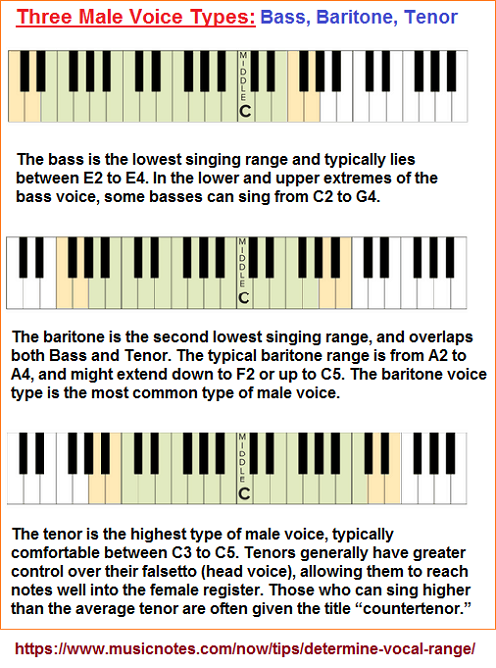 |
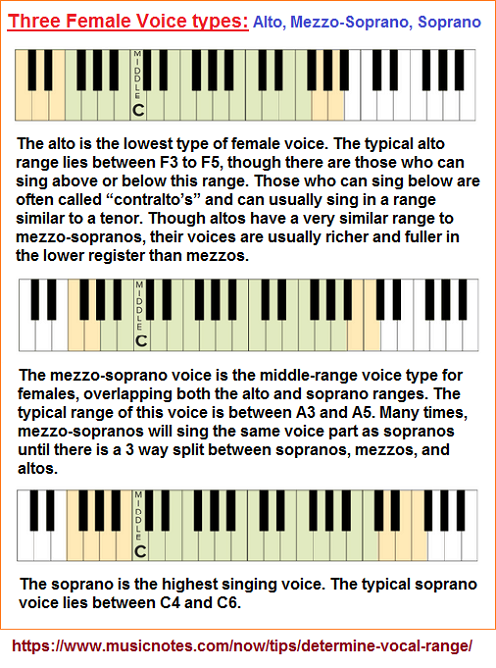 |
When looking at the typical range of male and female voices:
The voiced speech of a typical adult male will have a fundamental frequency from 85 to 180 Hz, and that of a typical adult female from 165 to 255 Hz. Thus, the fundamental frequency of most speech falls below the bottom of the voice frequency band as defined above. However, enough of the harmonic series will be present for the missing fundamental to create the impression of hearing the fundamental tone. (Wikipedia: (Human) Voice frequency)
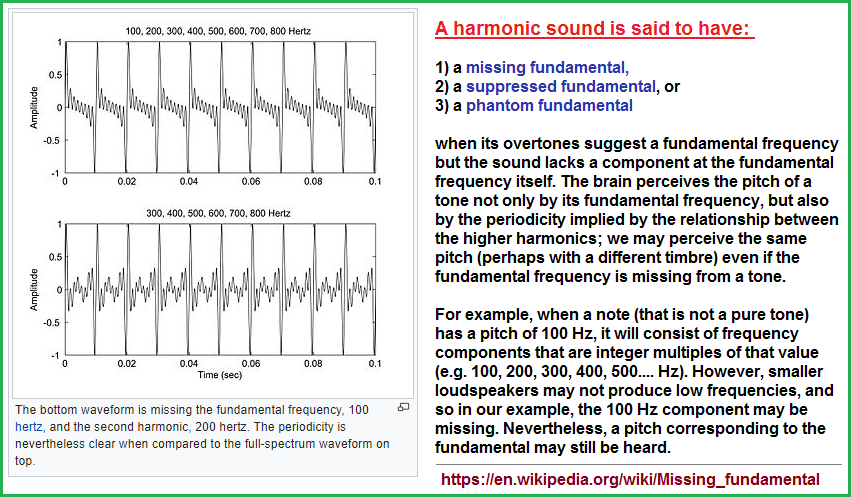
Yet, let us now take a look at the hearing ranges of humans and then with other animals for comparison:
Hearing range describes the range of frequencies that can be heard by humans or other animals, though it can also refer to the range of levels. The human range is commonly given as 20 to 20,000 Hz, although there is considerable variation between individuals, especially at high frequencies, and a gradual loss of sensitivity to higher frequencies with age is considered normal. Sensitivity also varies with frequency, as shown by equal-loudness contours. Routine investigation for hearing loss usually involves an audiogram which shows threshold levels relative to a normal.
Several animal species are able to hear frequencies well beyond the human hearing range. Some dolphins and bats, for example, can hear frequencies up to 100,000 Hz. Elephants can hear sounds at 14–16 Hz, while some whales can hear infrasonic sounds as low as 7 Hz (in water). (Wikipedia: Hearing range)
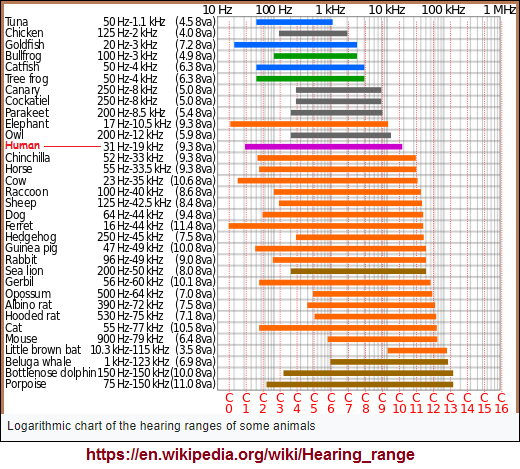
Notice there are not insect models provided, but we can provide a short example in consideration of ultrasonics:
Response of Animals to Ultrasound (Ultrasound and Insects by D Mohankumar
- 22-25 kHz: Dogs, Cats
- 38-44 kHz: Mosquitoes, Fleas, House Fly, Spiders, Cockroaches
- 52-60 kHz: Lizards
- 60-72 kHz: Rats
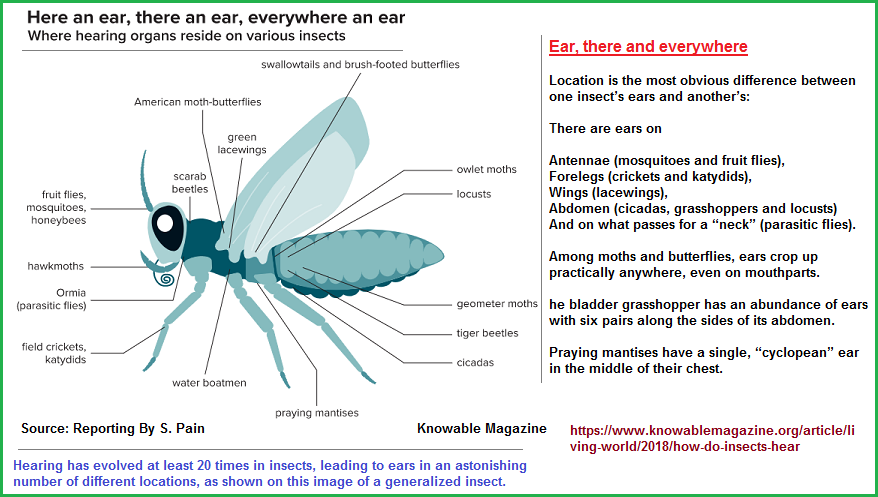
And now we come to the area of consideration involving the range of human thinking or thought processing, where the generalized consideration is to think the range is at its higher limit when speaking about a god, and its lower limit when thinking about the opposite spectrum of non-human thinking that varies with different forms of anthropomorphic consideration which includes non-animate entities such as rocks, specks of sand, clouds, etc...
However, if we limit the discussion to the human range of accountability, we still encounter an inclination to provide humanity with some extra-ordinary ability under some circumstances, with the lower ranges of thinking or at least mental activity being aligned with physiological responses such as reflexes, instincts and impulses, though the ranges identified in sleep activity can be interpreted as mere electrical activity of the brain and/or some measure of unconscious, slightly conscious, or conscious activity that may or may not be recalled and may or may not have some influence on later behavior in a person's customary state of wakefulness.
Here is a sampling of referential ideas related to the brain, mind and thinking as expressed ranges in terms of function, structure, composition, or placement. However, it should be noted that if we count every single part of every single area of consideration atom by atom, there would be billions of entries, though in general investigative terms we do not typically study these areas either anatomically, functionally, or structurally in this manner. We very often compartmentalize the brain, mind and associative activity into different areas which is a "chunking" methodology:
Sleep, IQ/Mental functioning:
- Types of Intelligence from different perspectives of Howard Garderner's research:
Howard Gardner viewed Intelligence as ‘the capacity to solve problems or to fashion products that are valued in one or more cultural setting’ (Gardner & Hatch, 1989). He reviewed the literature using eight criteria or ‘signs’ of an Intelligence:
- Potential isolation by brain damage. The existence of idiots savants, prodigies and other exceptional individuals.
- An identifiable core operation or set of operations.
- A distinctive development history, along with a definable set of ‘end-state’ performances.
- An evolutionary history and evolutionary plausibility.
- Support from experimental psychological tasks.
- Support from psychometric findings.
- Susceptibility to encoding in a symbol system. (Howard Gardner 1983: 62-69)
Candidates for the title ‘an Intelligence’ had to satisfy a range of these criteria and must include, as a prerequisite, the ability to resolve ‘genuine problems or difficulties’ (ibid.: 60) within certain cultural settings. Making judgments about this was, however, ‘reminiscent more of an artistic judgment than of a scientific assessment' (ibid.: 62).
Howard Gardner initially formulated a list of seven Intelligences. His listing was provisional. The first two have been typically valued in schools; the next three are usually associated with the arts; and the final two are what Howard Gardner called ‘personal Intelligences’ (Gardner 1999: 41-43).
(source: Howard Gardner, multiple Intelligences and education
8 types of Intelligence by Howard Gardener: (Multiple Intelligences, Exploring the Different Types of Intelligence
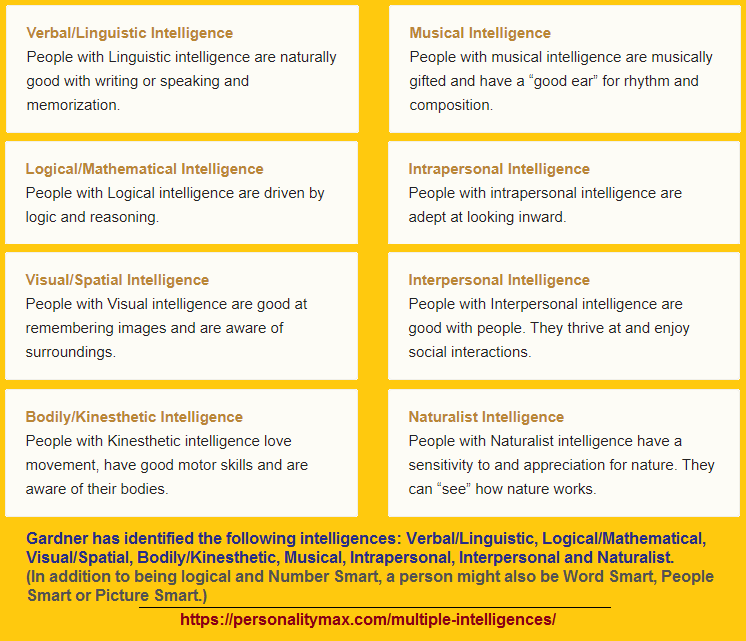
In 1983 an American developmental psychologist Howard Gardener described 9 types of Intelligence. What other scientists thought were just soft-skills, such as interpersonal skills, Gardener realized were types of Intelligence. It makes sense. Just as being a math whiz gives you the ability to understand the world, so does being "people smart" give you the same ability, just from a different perspective. Not knowing math you may not calculate the rate at which the universe is expanding, but you are likely to have the skills to find the right person who will.
(Source: 9 Types Of Intelligence – Infographic)
9 Types Of Intelligence – Infographic
- Naturalist (nature smart)
- Musical (sound smart)
- Logical-mathematical (number/reasoning smart)
- Existential (life smart)
- Interpersonal (people smart)
- Bodily-kinesthetic (body smart)
- Linguistic (word smart)
- Intra-personal (self smart)
- Spatial (picture smart)

| The 10 Types Of Intelligence |
Intelligence can be divided into several sub-components which are distinct from one another. Therefore, strengths in some areas of Intelligence are not necessarily indicative of strength in other mental areas. Below you will find a brief breakdown of the ten types of Intelligence: 1. Logical-Mathematical Your ability to comprehend arguments which move from one premise to the other, and to be able to decipher between premises, is the ability gained through possessing logical-mathematical Intelligence. The more of this you have, the better you will tend to be at debating, arguments, maths and the like. 2. Linguistic Also known as grammatical Intelligence, this is your ability to understand and express language. A high degree of this will be characterized by a large day-to-day vocabulary and an ability to express things clearly and concisely. 3. Spatial People with high spatial Intelligence will have an easy time visualizing images in their mind. This means they may be inclined towards artistic pursuits. 4. Musical This is to do with the ability to decipher the rhythm, harmony and tone of sound precisely. Those with high musical Intelligence can learn quite well simply through listening. 5. Bodily-Kinesthetic This includes hand to eye co-ordination and the ability to learn things through body movements and actions alone. People with high bodily Intelligence tend to learn by doing as opposed to the theory of things. 6. Social This is the ability to interact with other people, either as a leader or follower. People with high social Intelligence tend to be able to understand people and their circumstances without even saying. They are conscious of small signals which people give off, and these can be read properly to describe the social situation accurately. This is an aspect of mental Intelligence because social situations can be deciphered or interpreted tacitly. 7. Emotional This is the ability to understand both your own and other people's emotions. Someone with high emotional Intelligence will be able to understand the reasons for their emotions, and can effectively empathize with the emotions of others. 8. Intuitional This is the Intelligence of gut instinct. Someone with high intuitional Intelligence will be able to tacitly tell whether a situation is right or wrong, simply from the instinct that they get. It is also the ability to be able to identify good ideas and thought when they occur, without it getting lost in the mental inferno of other thoughts. 9. Perspectival This is the ability to understand another point of view without that point of view even being stated. Someone with high perspectival Intelligence will be able to understand other people's belief systems and be able to incorporate it themselves to have a "real life" perspective of it. 10. Stationary This is the ability to understand something without any bias whatsoever. This bias can be in the form of emotional, belief, theoretical and empirical bias. It is the ability to see something "as is" without adding any attachment of outcome or belief to it. What To Expect The first step to improving on weakness is in identifying it in the first place, so you can specialize your efforts into improving those weak aspects individually. This will allow you to improve your Intelligence in a systematic way, without the confusion arising from a lack of weakness identification. Related Articles |
Source: The 10 Types Of Intelligence
The multi-modal approach to an analysis of multiple Intelligence: (Multi-Modal Intelligence and Multiple Intelligences)
In this effort, it helps to have a sense of our diverse cognitive capabilities, our multi-modal Intelligence. In the last fifteen years an increasing number of people are reaching far beyond IQ to research and comment on the multi-dimensional quality of human Intelligence -- or, as some see it, multiple Intelligences. Here is a composite (and sometimes overlapping) list of human Intelligences drawn from a half-dozen such explorations. As you read it, think about your own capacities in each area, and about people you know who are especially gifted or incapable in these various Intelligences.
- Practical Intelligence is the ability to think in concrete examples and solve daily problems directly without necessarily being able to explain how; the tendency to survive or succeed through taking straightforward, responsive, concrete action. (Also called marketing, strategic or political Intelligence -- since it focuses on "the art of the possible" -- or just common sense or simple effectiveness.)
- Verbal Intelligence is the ability to think and communicate effectively and creatively with words; and to recognize, use and appreciate linguistic patterns.
- Logical Intelligence is the ability to think in terms of (and to appreciate) abstract parts, symbols and sequential relationships, conceptual regularities or numerical patterns, and to reach conclusions or construct things in an orderly way. (Also called rational, analytic or mathematical Intelligence.)
- Associative Intelligence is the ability to think in non-sequential associations -- similarities, differences, resonances, meanings, relationships, etc. -- and to create (and appreciate) totally new patterns and meanings out of old ones.
- Spatial Intelligence is the ability to visualize, appreciate and think in terms of pictures and images; to graphically imagine possibilities; and to observe, understand, transform and orient oneself in visual reality. (Also called pictorial or imaginative Intelligence.)
- Intuitive Intelligence is the ability to know directly, to perceive and appreciate whole or hidden patterns beyond (or faster than) logic.
- Musical Intelligence is the capacity to perceive, appreciate, resonate with, produce and productively use rhythms, melodies, and other sounds.
- Aesthetic Intelligence is the ability to produce, express, communicate and appreciate in a compelling way inner, spiritual, natural and cultural realities and meanings. (This can include aspects of verbal, musical and spatial Intelligences.)
- Body Intelligence is the ability to sense, appreciate, and utilize one's own body -- movement, manual dexterity, tactile sensitivity, physical responsiveness and constraints; to create and think in terms of physiological patterns; to maintain physical health; and to relate to or meet the needs of others' bodies. (Also called kinesthetic or somatic Intelligence.)
- Interpersonal Intelligence is the ability to perceive, understand, think about, relate to and utilize other people's subjective states, and to estimate their likely behavior. This includes, especially, empathy.
- SOCIAL Intelligence is the ability to work with others and find identity and meaning in social engagement; to perceive, think, and deal in terms of multi-person patterns, group dynamics and needs, and human communities; it includes a tendency towards cooperation and service. (Also called team Intelligence.)
- Affectional Intelligence is the ability to be affected by, connected to or resonant with people, ideas, experiences, aesthetics, or any other aspect of life; to experience one's liking or disliking of these things; and to use one's affinities in decision-making and life.
- Mood Intelligence is the ability to fully experience any mood as it happens (without having to judge it or do anything about it), to learn from it, and to move out of it at will -- especially to generate resilience.
- Motivational Intelligence is the ability to know and to work with what moves you; to sense, think and initiate in terms of needs, wants, will, courage, responsibility and action -- one's own and others. (This can include that aspect of mood Intelligence that can marshal emotions in the service of a goal.)
- Intrapersonal Intelligence is the ability to recognize, access and deal with one's own subjective (or inner) world. (This can include aspects of affectional, mood, motivational and body Intelligences.)
- Emotional Intelligence is the ability to experience, think and deal with emotional patterns in oneself and others. (This can include aspects of interpersonal, intrapersonal, affectional, mood and motivational Intelligences.)
- BASIC Intelligence is the ability to move toward what is healthy and desirable and away from what is unhealthy or undesirable. (This can use affectional and practical Intelligences, or be almost automatic and instinctual.)
- Behavioral pattern Intelligence is the ability to recognize, form and change one's own behavioral patterns, including compulsions, inhibitions and habits.
- Parameter Intelligence is the ability to create and sustain order and predictability -- to recognize, establish, sustain, and change rhythms, routines/rituals, boundaries, guiding principles/values/beliefs, etc., in one's own life.
- Habit Intelligence is the ability to recognize, form and change one's habits (which naturally embraces many aspects of behavioral and parameter Intelligence).
- Organizing Intelligence is the ability to create order in one's own life and in other lives/groups/systems. (This can include aspects of parameter, team/social, and logical Intelligences).
- Spiritual Intelligence is the ability to sense, appreciate and think with spiritual and moral realities and patterns -- to operate from an awareness of ultimate common ground (consciousness, spirit, nature, or some other sacred dimension). (This is usually dependent on intrapersonal Intelligence.) (Also called moral or transcendental Intelligence.)
- Narrative Intelligence is the ability to perceive, know, think, feel, explain one's experience and influence reality through the use of stories and narrative forms (characters, history, myth, dreams, scenarios, etc.).
- Eco-Intelligence is the ability to recognize, appreciate, think and feel with, and utilize natural patterns and one's place in nature, and to empathize with and sustain healthy relationships with animals, plants and natural systems.
If one takes a rather whimsical view of Intelligence, we can have multiple more such as bathing Intelligence (proper hygiene), feeding Intelligence (nutrition guidance), breathing Intelligence (taught in mediation), cooking Intelligence (for flavor, for dietary specificities), running away Intelligence (such as getting out from under a storm or attacker), submissiveness Intelligence (knowing when the odds are not in your favor), social spacing Intelligence (knowing when to not crowd, creating life-saving exists), keeping your mouth shut Intelligence (outbursts were once responded to with an English Brake or muffling device), animal training Intelligence (for different animals), shooting Intelligence (guns, rifles, mortars, artillery, arrows, boomerangs, basketballs, etc..), kite flying Intelligence, swimming Intelligence, professional cycling Intelligence (breakaway presence, pelaton presence, support, leadership), gardening Intelligence (when, why, where, how to plant, harvest), surfing the internet Intelligence (knowing the needed parameters to elicit desired responses from a machine), pan handling Intelligence (where, when how to ask for money), shoplifting Intelligence (what, when, how to get what one wants), snowman making Intelligence (snow pack density), hyper-vigilance Intelligence (used by those who have learned to be wary of potential or possible assaults), etc...
Approach: Theory of language and language learning
Multiple Intelligences (MI) theory was originally proposed by Gardner (1993) as a contribution to cognitive science. Fairly early on, it was interpreted by some general educators, such as Armstrong (1994), as a framework for rethinking school education. Some schools in the United States have indeed remade their educational programs around the MI model. Applications of MI in language teaching have been more recent, so it is not surprising that MI theory lacks some of the basic elements that might link it more directly to language education. One lack is a concrete view of how MI theory relates to any existing language and/or language learning theories, though attempts have been made to establish such links (e.g., Reid 1997; Christison 1998). It certainly is fair to say that MI proposals look at the language of an individual, including one or more second languages, not as an "added on" and somewhat peripheral skill but as central to the whole life of the language learner and user. In this sense, language is held to be integrated with music, bodily activity, interpersonal relationships, and so on. Language is not seen as limited to a "linguistics" perspectives but encompasses all aspects of communication.
Language learning and use are obviously closely linked to what MI theorists label "Linguistic Intelligence." However, MI proponents believe there is more to language than what is usually subsumed under the rubric linguistics. There are aspects of language such as rhythm, tone, volume, and pitch that are more closely linked, say, to a theory of music than to a theory of linguistics. Other Intelligences enrich the tapestry of communication we call "language." In addition, language has its ties to life through the senses. The senses provide the accompaniment and context for the linguistic message that give it meaning and purpose. A multi-sensory view of language is necessary, it seems, to construct an adequate theory of language as well as an effective design for language learning. A widely accepted view of Intelligence is that Intelligence – however measured and in whatever circumstance – comprises a single factor, usually called the "g" factor. From this point of view, "Intelligence (g) can be described as the ability to deal with cognitive complexity. . . . The vast majority of Intelligence researchers take these findings for granted" (Gottfredson 1998: 24). One popular explication of this view sees Intelligence as a hierarchy with g at the apex of the hierarchy:
more specific aptitudes are arrayed at successively lower levels: the so-called group factors, such as verbal ability, mathematical reasoning, spatial visualization and memory, are just below g, and below these are skills that are more dependent on knowledge or experience, such as the principles and practices of a particular job or profession. (Gottfredson 1998: 3)
The view of Gardner (and some other cognitive scientists) "contrasts markedly with the view that Intelligence is based on a unitary or ‘general’ ability for problem solving" (Teele 2000: 27). In the Gardner view, there exists a cluster of mental abilities that are separate but equal and that share the pinnacle at the top of the hierarchy called Intelligence – thus, the eight Multiple Intelligences that Gardner has described. One way of looking at the learning theoretical argument is to apply the logic of the single factor (g) model to the Multiple Intelligences model. The single factor model correlates higher Intelligence (+g) with greater speed and efficiency of neural processing; that is, the higher the g factor in the individual, the greater the speed and efficiency of that individual’s brain in performing cognitive operations (Gottfredson 1998: 3). If there is not one I but several I’s, then one can assume that the speed and efficiency of neural processing will be greatest when a particular I is most fully exercised; that is, if a language learner has a high musical Intelligence, that person will learn most quickly (e.g., a new language) when that content is embedded in a musical frame.
Source: Multiple Intelligences
Typically we find that language, hearing and thinking (mental processing/mental activity/cognition) are studied in terms of impairment to what we presume are normal or natural states and expressions thereof. It is uncommon for anyone to describe present normalcy as the product of a diseased condition, much less widespread insanity, since "insanity" is very often interpreted to be represented by someone doing evil things or exhibiting excesses of one or another behavior such as screaming, fighting, pulling out hair, self-injury, injury to one or more others, etc..., though insanity can also be expressed by quiet self-absorption. And though we do find widespread interests in an analysis of language, hearing and thinking in terms of an attempted enhancement of overall abilities such as in the notion of creating a school or workplace to encourage creativity, the general focus is pointed towards applying resources on a specific subject such as hearing, such as speech, such as thinking, such as eye-to-hand coordination, etc., very often attached to some assisting mechanical and/or electronic devise, though pens, pencils, musical instruments, sports equipment, etc. are not typically described by its users as being mechanical apparatus. The word "mechanical" like so many other words are used in a functionally fixed frame of reference, aptly referred to as "functional fixedness" in the psychology genre, though the cited wikipedia article fails to describe it in the large sense not constrained by the phrase "traditional usage" since this phrase is part of a functionally fixed set of occurrences related to the genre of psychology which, like most subjects, relies on functionally fixed notions and uses, one of which is the presence of Persistent Dichotomies no matter how often they are described as being an outdated array of thought processing occurring in psychology. The tongue of Psychology still wags back and forth with the same two-patterned frothing into which the behavior of humanity is viewed and expected to be constrained to.
The persistence of dichotomies in the study of behavioral development by Timothy D Johnston
Origination date: Monday, December 2nd, 2019... 5:47 AM
Initial Posting: Thursday, December 26th, 2019... 9:56 AM
Updated Posting: Tuesday, February 7th, 2023... 10:44 AM
Herb O. Buckland
herbobuckland@hotmail.com